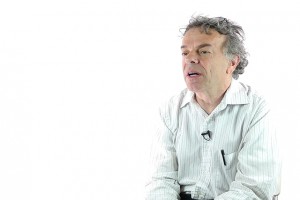Quitting visual search
Radiologist Jeremy M. Wolfe on search strategies in our everyday life, amnesiac search, and false alarms at me...
What did we learn from studying the youth violence? Which social institutes can help decrease juvenile involvement in crimes? Diker-Tishman Professor of Sociology at Harvard University Christopher Winship speaks on an example of an effective solution of the youth crime problem.
There’s research done at the Kennedy school here at Harvard. It showed that it was a very small percentage of youth that were responsible for almost all of the violence. There we were really talking about one to two percent or a few thousand (1-2-3 thousand) youth that in most cases were gang-involved and they were the source of the violence.
What was unique about this effort is that the police department ended up creating a partnership with a set of inner-city black ministers. A very unusual group of people (three key people) who all had gone to Harvard, all were exceptionally bright, all had decided to dedicate their lives to working in the inner-city and particularly working on the problems of youth violence in the inner city, the problems of street violence.
My research in particular has shown that we need to understand this is not just a matter of what the police do but there’s sort of a political problem here too. How do you take a difficult potentially racial issue and find a way of dealing with it fairly? In Boston the mayor can fire the police commissioner anytime he wants. Well if you’re arresting some kid and his mother or uncle are calling the mayor and complaining, you’re creating a political problem.

Radiologist Jeremy M. Wolfe on search strategies in our everyday life, amnesiac search, and false alarms at me...

Historian Ruth Mazo Karras on church court records, means of contraception, and sex and gender roles in the Mi...

Psychologist Helen Tager-Flusberg on theory of mind, comorbidity, and symptoms of autism